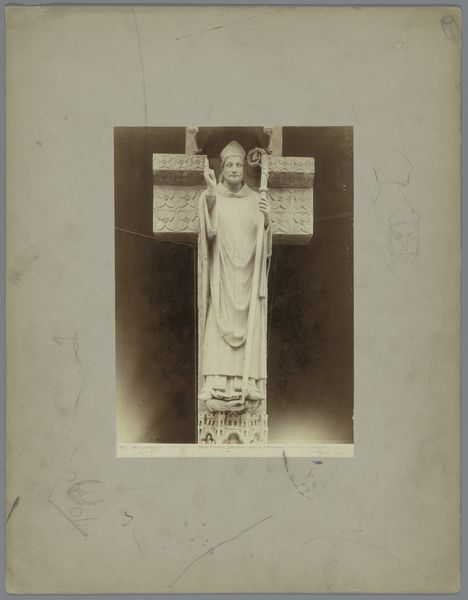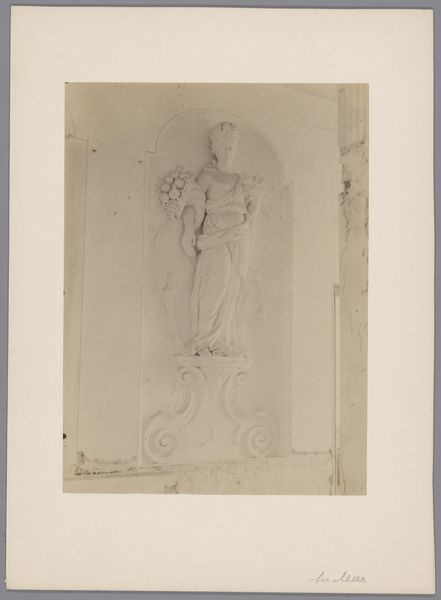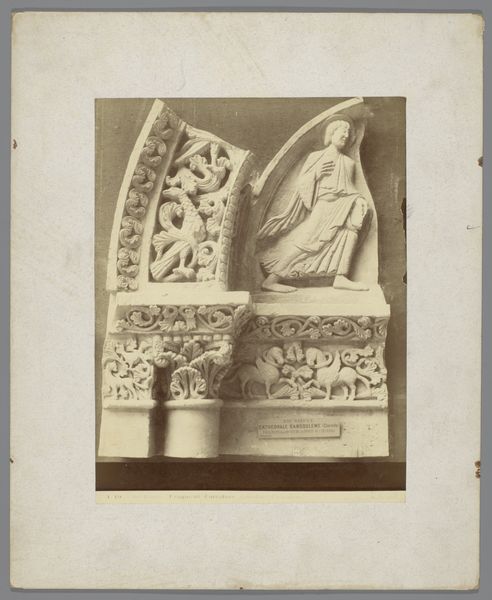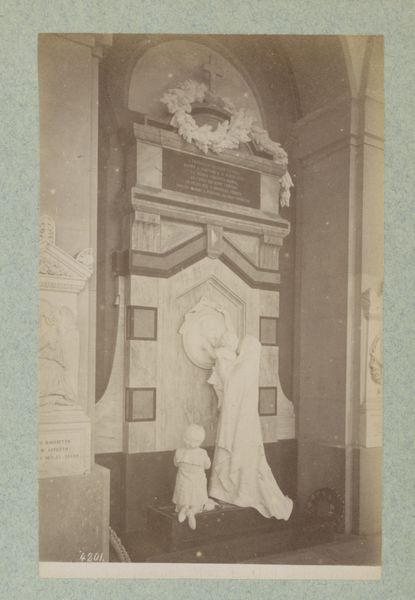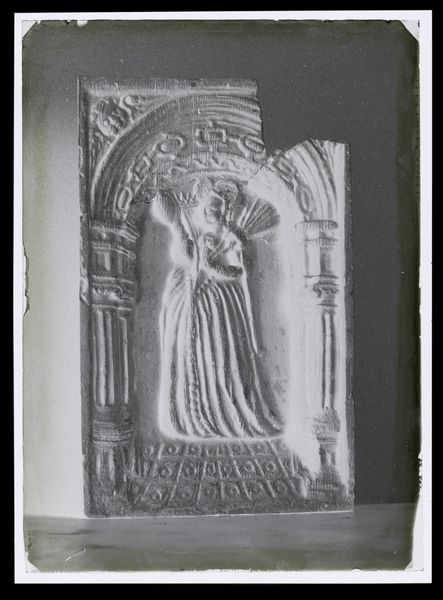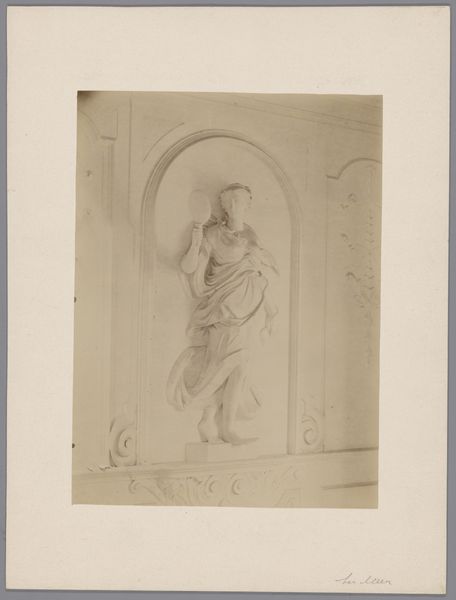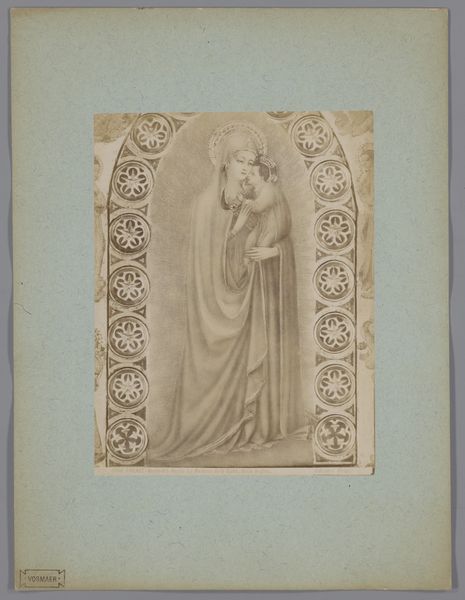
print, photography, sculpture
#
portrait
#
statue
# print
#
photography
#
sculpture
Dimensions: height 371 mm, width 303 mm
Copyright: Rijks Museum: Open Domain
Curator: This photograph, dating from sometime between 1850 and 1900, depicts the “Buste op de graftombe van Jean d'Asside in Périgueux," a sculptural piece by Adolphe Giraudon currently held in the Rijksmuseum. Editor: Immediately, I'm struck by how funerary the whole thing feels, a monochrome palette of greys and whites, depicting a solemn statue ensconced within an arched tomb structure. Curator: Yes, it's a photograph *of* a tomb, not the tomb itself. What intrigues me is the act of reproduction itself. The original tomb must have been quite monumental, requiring a photographer with specialized equipment to document it effectively for wider distribution via printmaking, making it more easily consumable to a new audience. Editor: Interesting point. Focusing on the image within the image, so to speak, what symbolism are you finding relevant here? The gentleman is captured mid-gaze with beard in tact...there’s a high degree of respect being paid to the subject, almost like an effigy in itself. Curator: From my perspective, the original act of *making* takes precedence. Look at the sharp lines of the stonework surrounding the bust. I would consider the physical labor needed to both quarry, move, then carefully carve that stone – it would’ve been intensive and would likely take multiple skilled artisans. Editor: Well said; the social status imbued from a grand commemorative statement certainly shows – look how even the architecture surrounding this bust, with it’s gothic-like arch is ornate itself. Someone significant rested within those walls, clearly. Curator: Indeed. In examining photographs like this, it's essential to move beyond the surface imagery and investigate what labor went into both constructing *and* archiving these cultural remnants that speak to broader socio-economic structures. The transition from direct sculpture to photographic reproduction changes the dynamic significantly Editor: Absolutely. This deep dive into cultural symbolism really puts a powerful new light on interpreting death. Thanks for this shift in thinking!
Comments
No comments
Be the first to comment and join the conversation on the ultimate creative platform.

